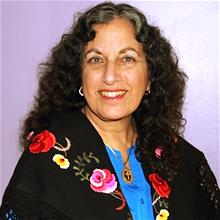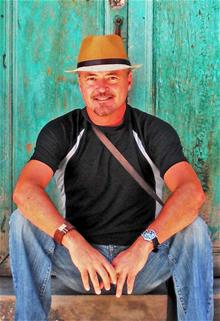 The 2016 winners of the Pura Belpré Award have more in common than being the recipients of a prestigious honor. Turns out, they collaborated on one of this year’s winning selections, and after its success, it’s no surprise they’ll continue to work together in the future.
The 2016 winners of the Pura Belpré Award have more in common than being the recipients of a prestigious honor. Turns out, they collaborated on one of this year’s winning selections, and after its success, it’s no surprise they’ll continue to work together in the future.
The Pura Belpré Award, established in 1996, is presented to a Latino/Latina writer and illustrator each year whose work best portrays and affirms a Latino experience in an outstanding work of literature for children and youth.
This past January, the Author Award went to Margarita Engle for Enchanted Air: Two Cultures, Two Wings: A Memoir (Atheneum)—a memoir in free verse that unfolds during an era of great tension between the United States and Cuba, a struggle Margarita experienced as a child of both cultures growing up during the Cold War.
Rafael López was presented the Illustrator Award for Drum Dream Girl: How One Girl’s Courage Changed Music (HMH), which also happens to be written by Engle. Rafael used vibrant hues of acrylic paint on wood to brilliantly animate the story of Millo Castro Zaldarriaga, a Chinese-African-Cuban girl in 1930s Cuba who became a world-renowned drummer.
I am thrilled to have interviewed Engle and López. Here, you’ll learn their thoughts on diversity, following your dreams, and how to share their books in the classroom.
Angie Zapata: Margarita, Enchanted Air is a beautiful, poetic retrospective of your experience growing up both Cuban and American. What elicited this reflection from you as a novel in verse?
Margarita Engle: Thank you! Writing a memoir was the most challenging task I’ve ever faced. Emotionally, it was terrifying. Some of the memories were excruciating. Poetry softened the blow and illuminated the aspect of hope.
AZ: What was it like to watch the United States and Cuba begin to reestablish diplomatic relations alongside the final publication process of your book?
ME: When I started writing Enchanted Air, I had no way of knowing that U.S.–Cuba diplomatic relations would soon be restored. Advanced review copies arrived during the week when President Obama announced the first step toward a thaw in Cold War hostilities. I rushed to revise the author’s note, grateful that my memoir, written as a plea for peace and reconciliation, could now be read as a song of gratitude.
AZ: Rafael, what is it about Millo’s story in Drum Dream Girl set in 1930s Cuba that you think inspires us in 2016?
 Rafael López: This timeless story is about the power of perseverance, a trait essential to achieving anything worth striving for. Despite obstacles and disappointments, Millo refused to allow tradition to discourage her. With inspired determination, I believe her beautiful struggle lights a path for others to follow their dreams.
Rafael López: This timeless story is about the power of perseverance, a trait essential to achieving anything worth striving for. Despite obstacles and disappointments, Millo refused to allow tradition to discourage her. With inspired determination, I believe her beautiful struggle lights a path for others to follow their dreams.
AZ: What aspects of Millo’s story did you want to be sure to render through your craft and what was your process for doing so?
RL: Channeling the spirit of this text required that I cross the river of reality to dreams and back again. With explosive colors and imagery, I painted a harsh gender-restricted reality filled with disapproval. This was contrasted by Millo’s dreams, where she is free to drum, float, and fly with imaginary jungle creatures and smiling moons.
AZ: Many describe your art as vibrant, vivid, and bold. What else would you like readers to notice about your illustrative style?
RL: Texture is magnetic, and I’m driven to use it in my work and explore how it evokes our senses, emotions, and feelings. Inspired by imagery from different cultures, I work to pull in many ideas and experiment with being worldly. Growing up in Mexico, I’m not afraid of surrealism and I create symbols to convey the spirit of an idea. Kids are much more sophisticated than we think, and I want to tap into their wisdom and see shapes instead of realistic representations of objects.
AZ: What advice do you both have for teachers sharing Enchanted Air and Drum Dream Girl with readers?
ME: I hope teachers will use Enchanted Air as a lesson in peacemaking, showing how people develop empathy and friendship by traveling and learning about each other. I hope they will point out that shunning an entire nation or group of people is not only senseless and futile but cruel. Sylvia Vardell wrote a great teacher’s guide for this book, available on her website, mine, and the publisher’s.
RL: I hope our book Drum Dream Girl will challenge kids to ask thoughtful questions, march to the beat of their own drum, and keep dreaming. How would you feel if told you couldn’t dance, play music, sports, or be president because you are a boy or a girl? Why is it important to keep practicing and never quit?
AZ: What are both your thoughts on cultural authenticity in literature for children, particularly as it relates to written languages and illustrations?
ME: In the case of Cuba, many Americans have written books about the island without any travel or firsthand knowledge. Until 1991, when I was finally able to begin traveling back and forth again, it was hard for me to write complete books about Cuba, so most of my creative work was limited to separate poems and stories.
RL: I want children to see themselves on the pages of the books I create and I have always been driven to embrace a worldly style. Working together, we can get beyond stereotypes and misrepresentations and help kids tackle the complex issues of living in our increasingly inter-connected planet.
AZ: How do you go about selecting your next projects? And what’s next?
ME: I read voraciously, encountering historical figures and events so amazing that I wonder why I didn’t learn about them in school. Rafael and I have a picture book [due in 2017] called Bravo! (Macmillan) that combines my poems about great Latinos with his powerful images. My next YA verse novel [to be published in August] is Lion Island: Cuba’s Warrior of Words (Atheneum), about the freedom struggle of indentured Chinese laborers. I also have Morning Star Horse/El Caballo Lucero (HBE), a bilingual middle grade historical fantasy, scheduled for this fall.
RL: I connect to stories that have a lasting and strong message. That’s why I’m grateful for the opportunity to dance again on the horizon with Margarita’s poetic words. I’m excited about the release of a story [published in April] written by F. Isabel Campoy and Theresa Howell inspired by my own work as a community muralist called Maybe Something Beautiful (HMH).
 Angie Zapata, an ILA member since 2002, is an assistant professor of literacy education at the University of Missouri. Her research and teaching focus on the promise and possibilities of diverse literature in K–12 language arts classrooms.
Angie Zapata, an ILA member since 2002, is an assistant professor of literacy education at the University of Missouri. Her research and teaching focus on the promise and possibilities of diverse literature in K–12 language arts classrooms.